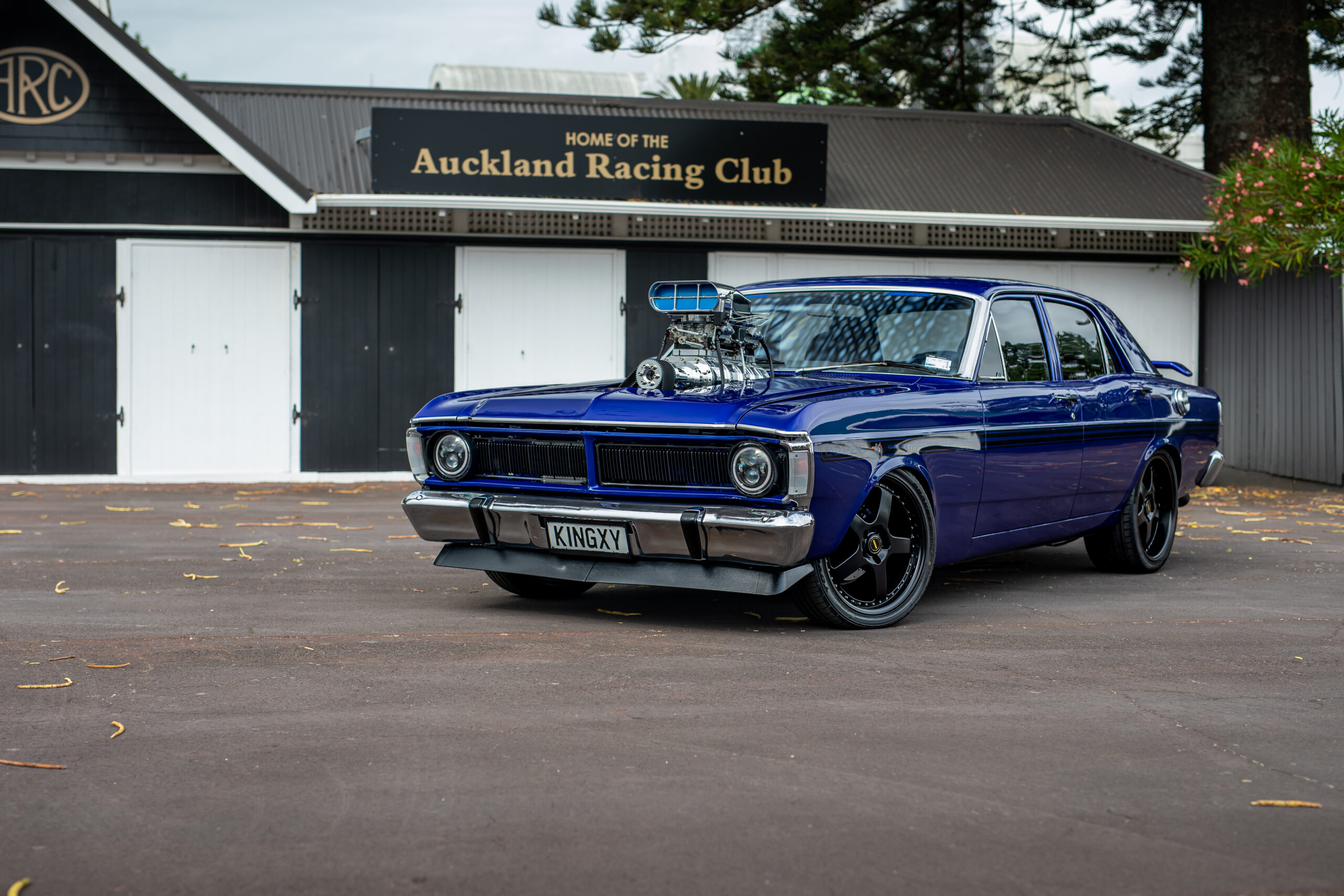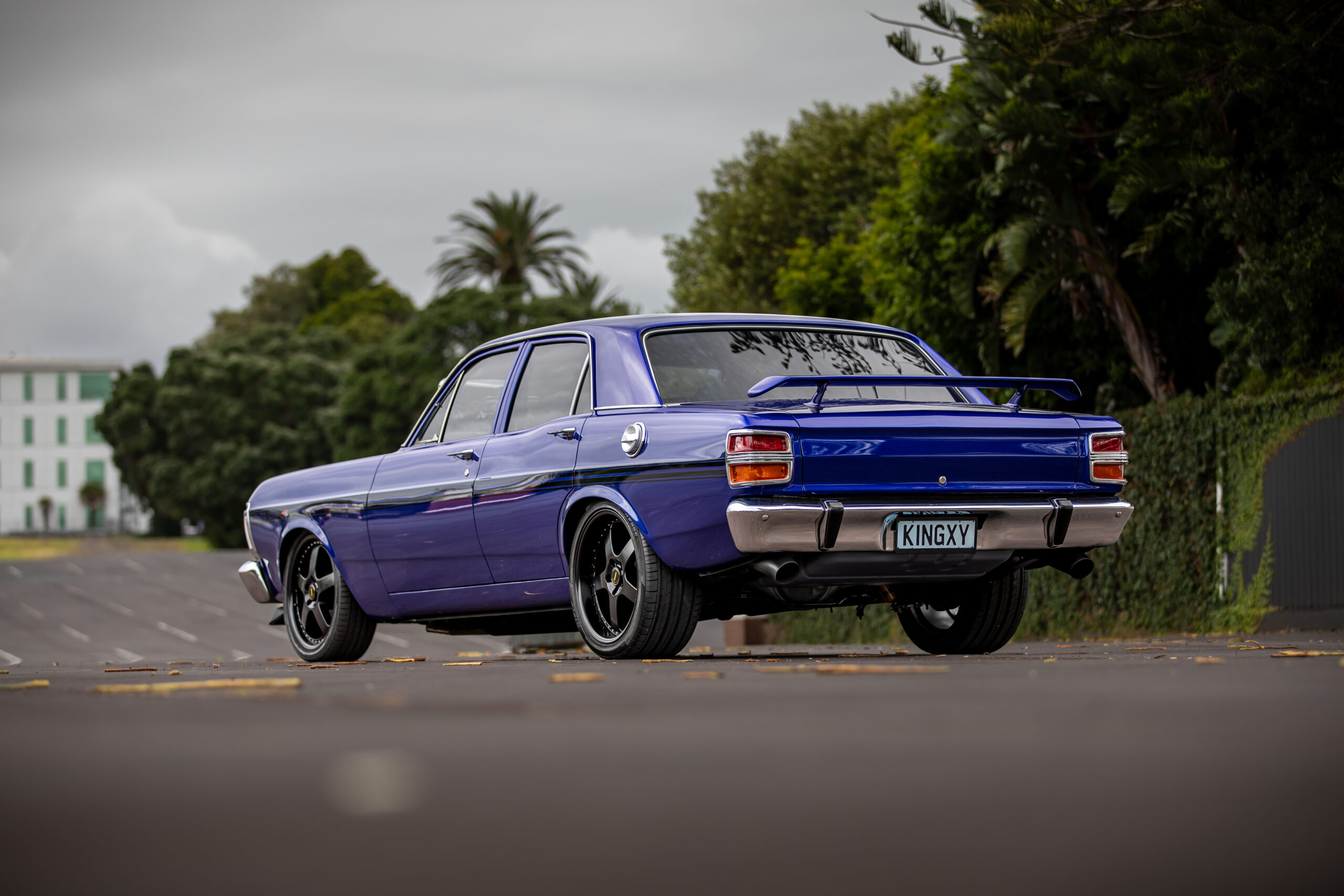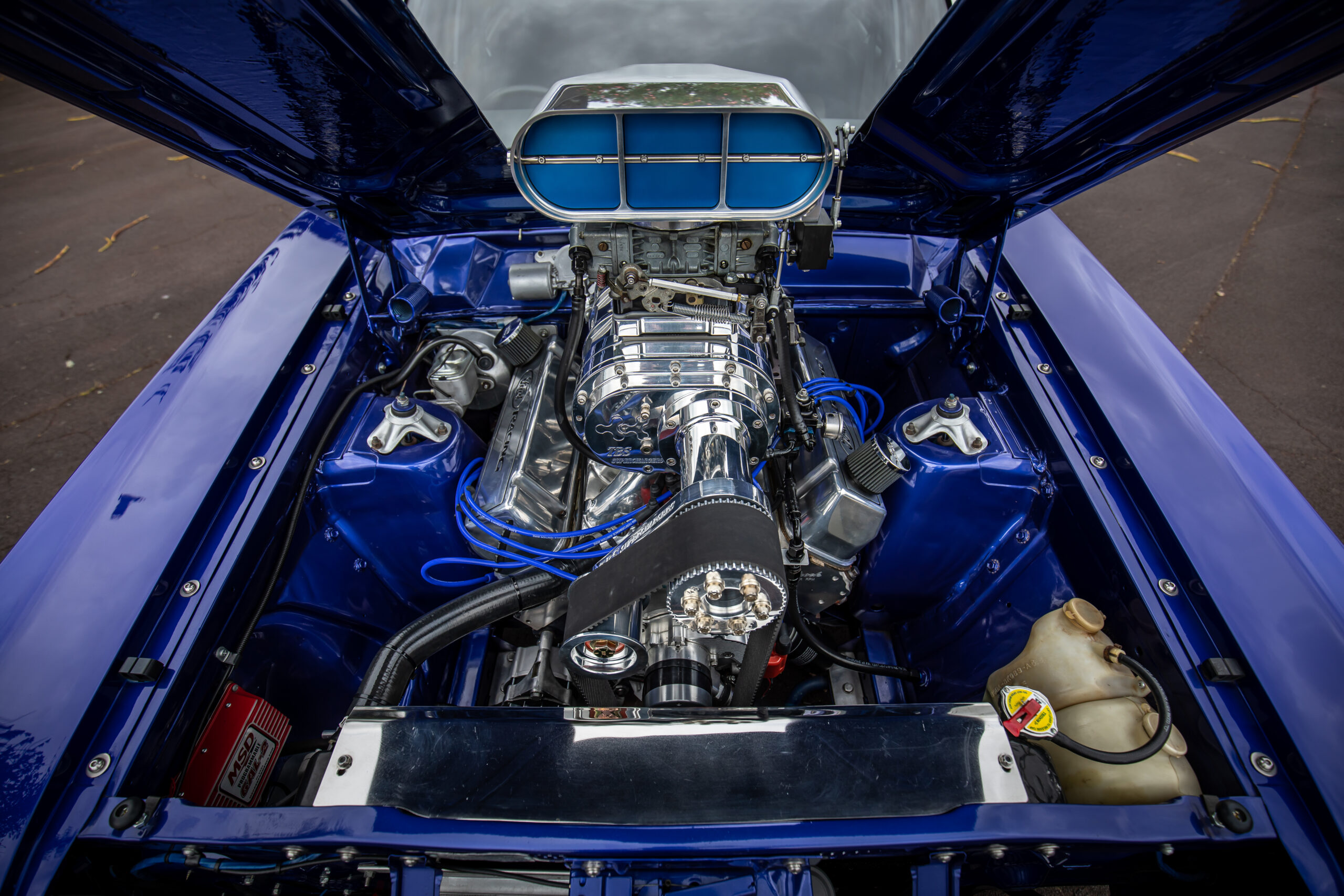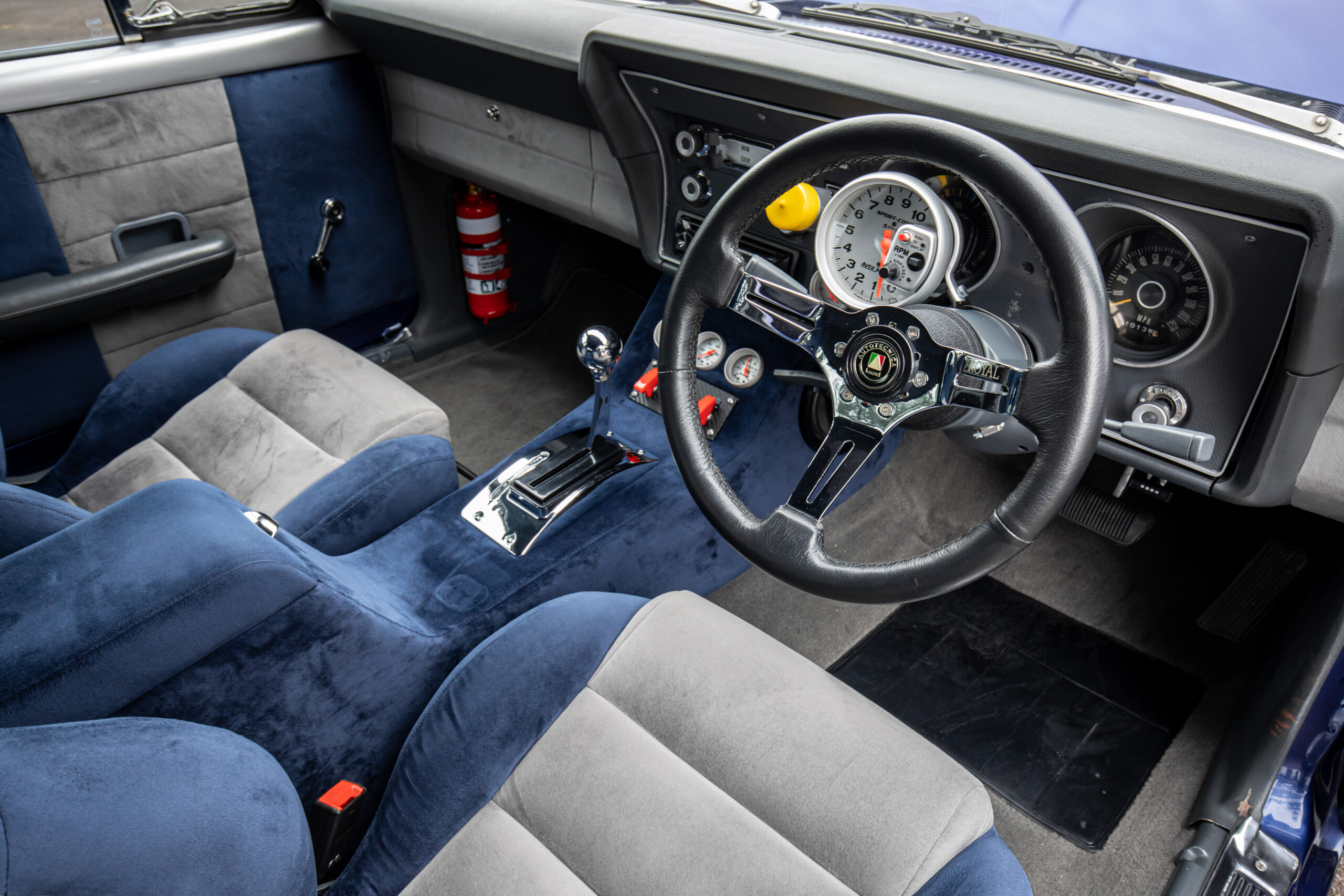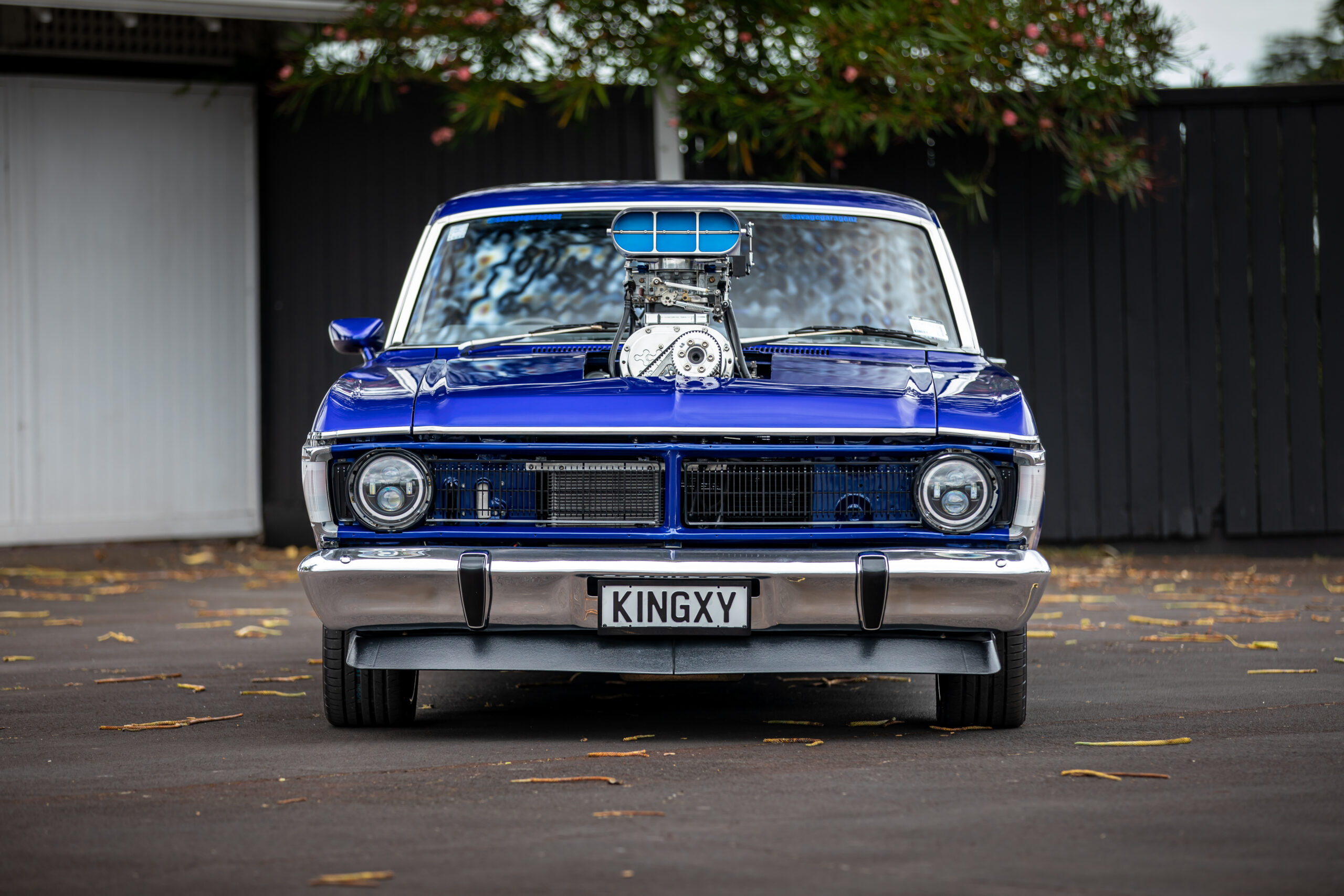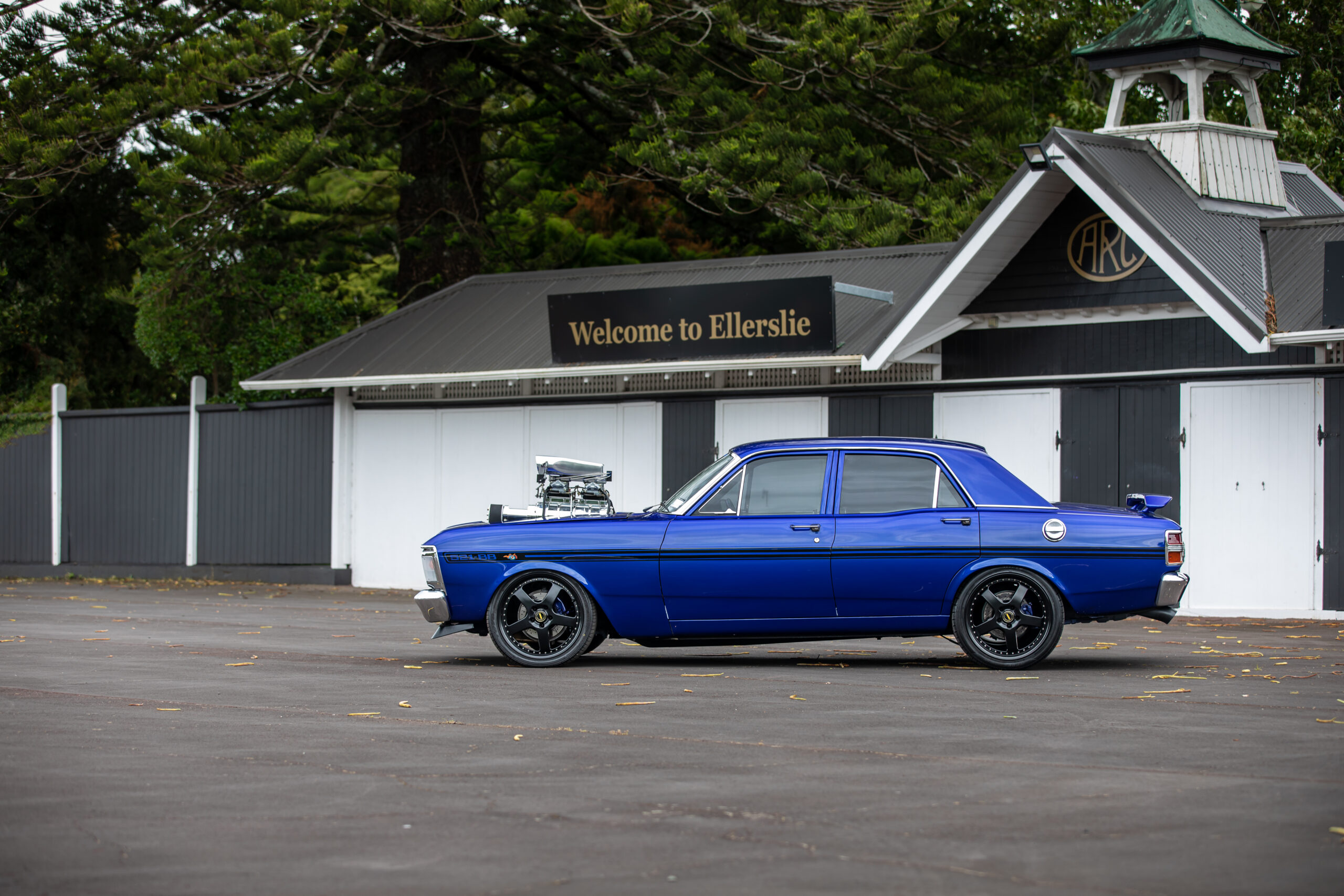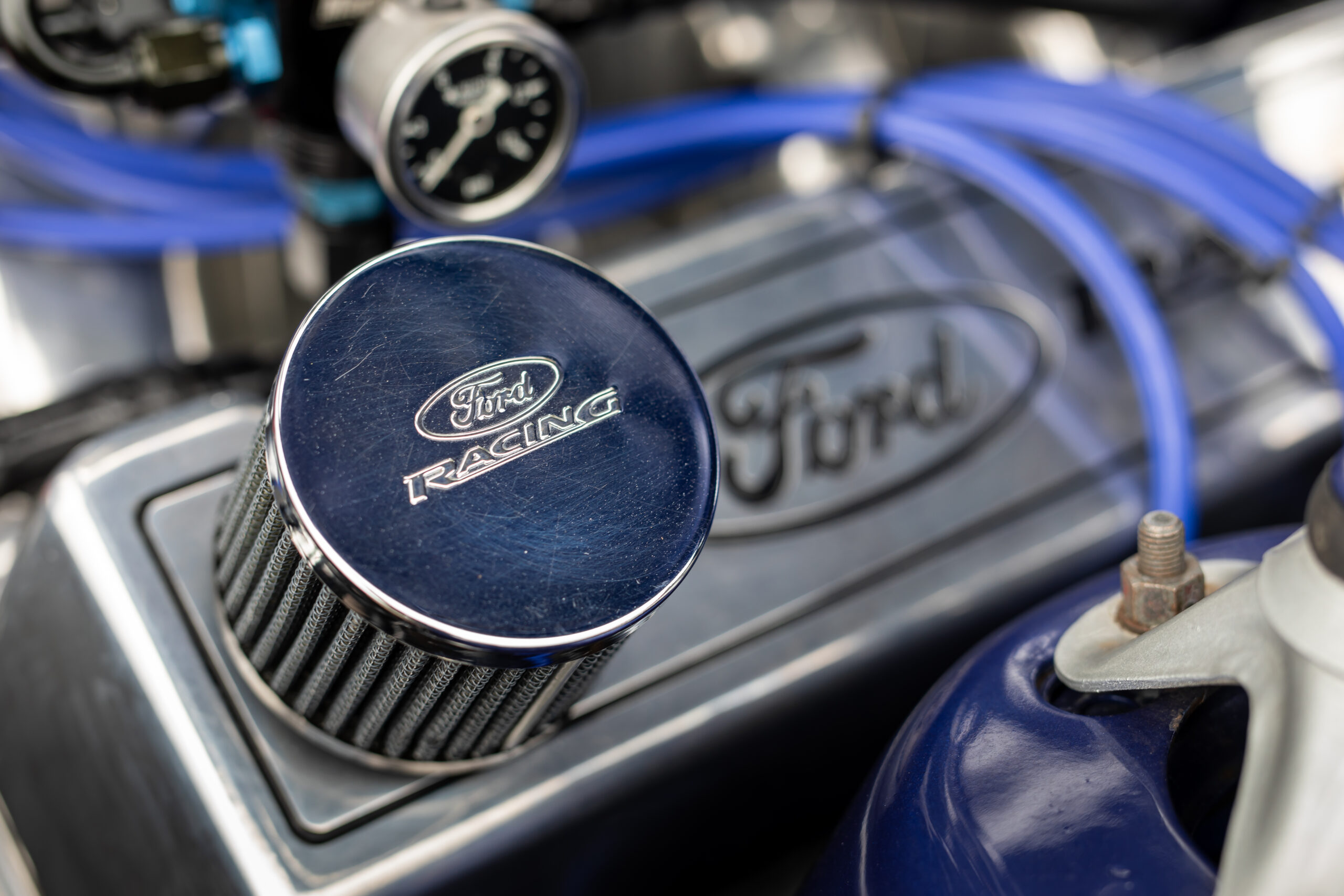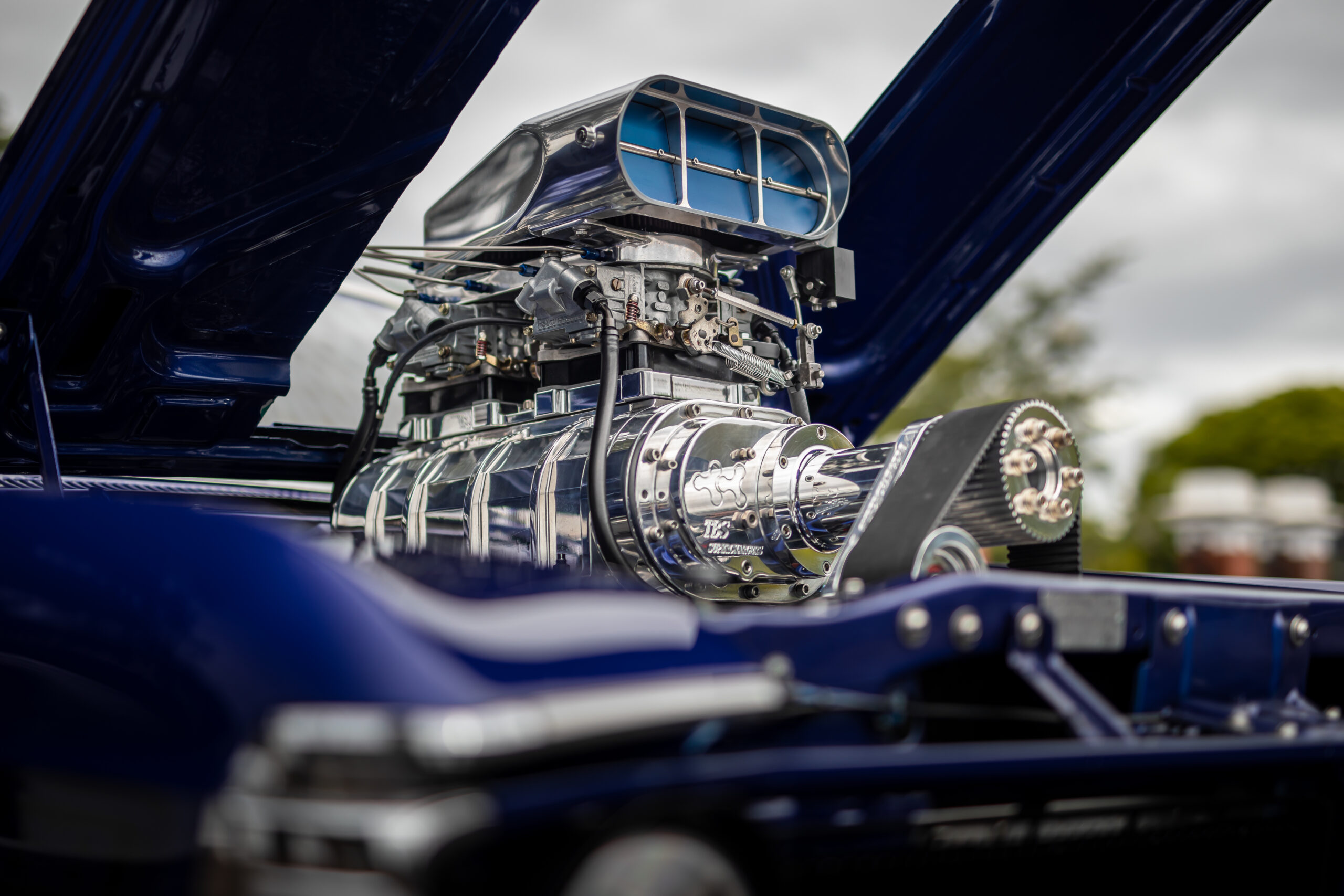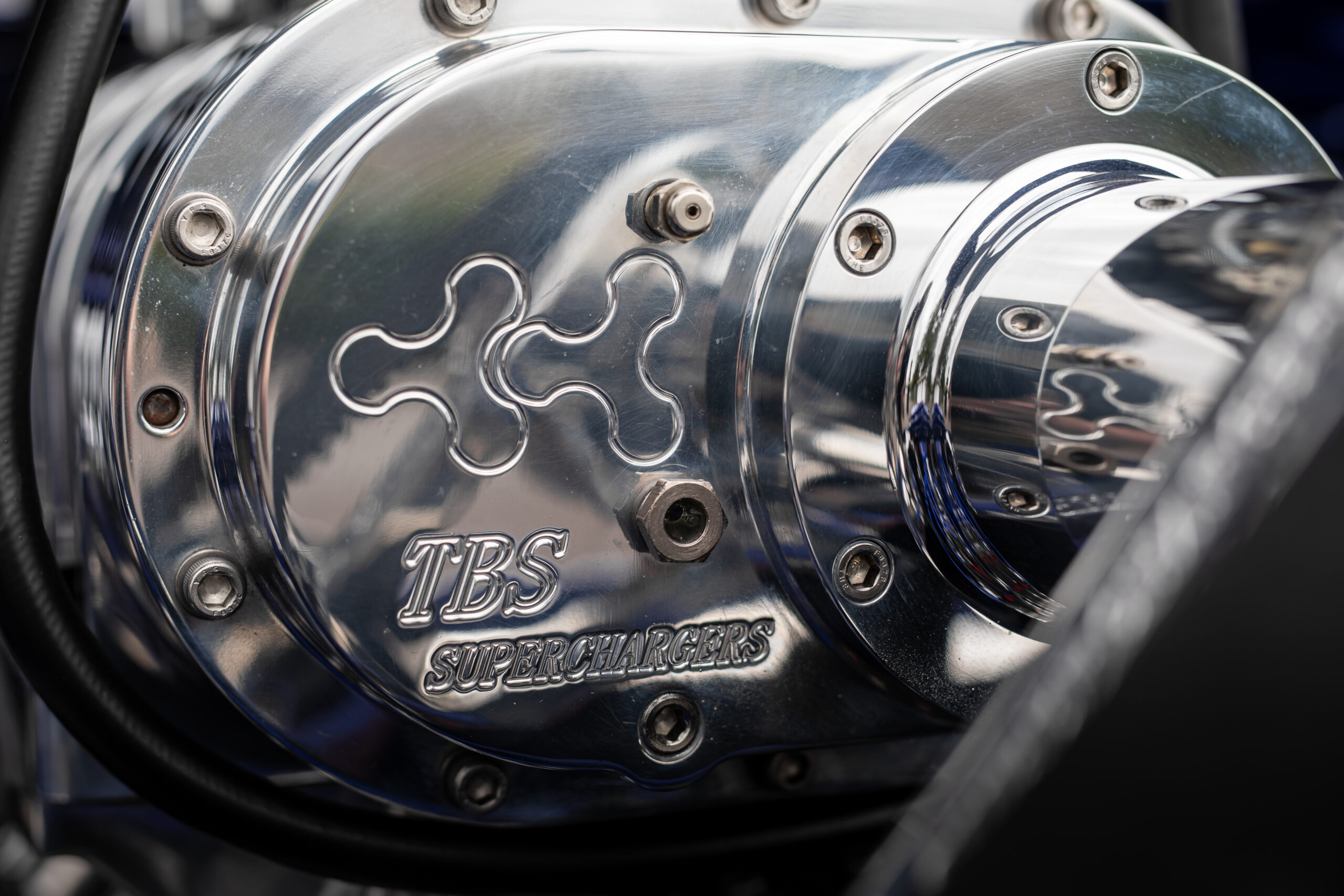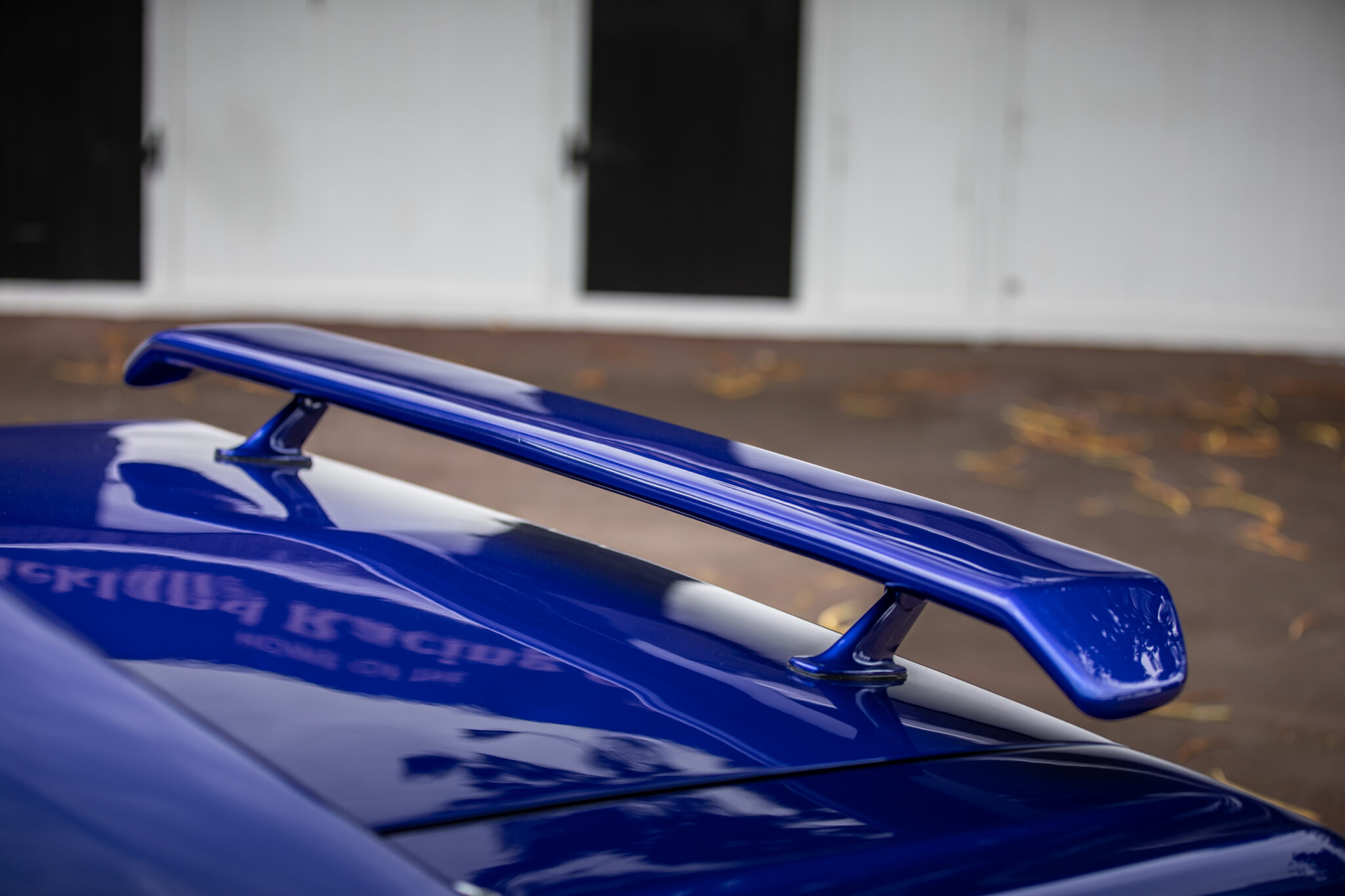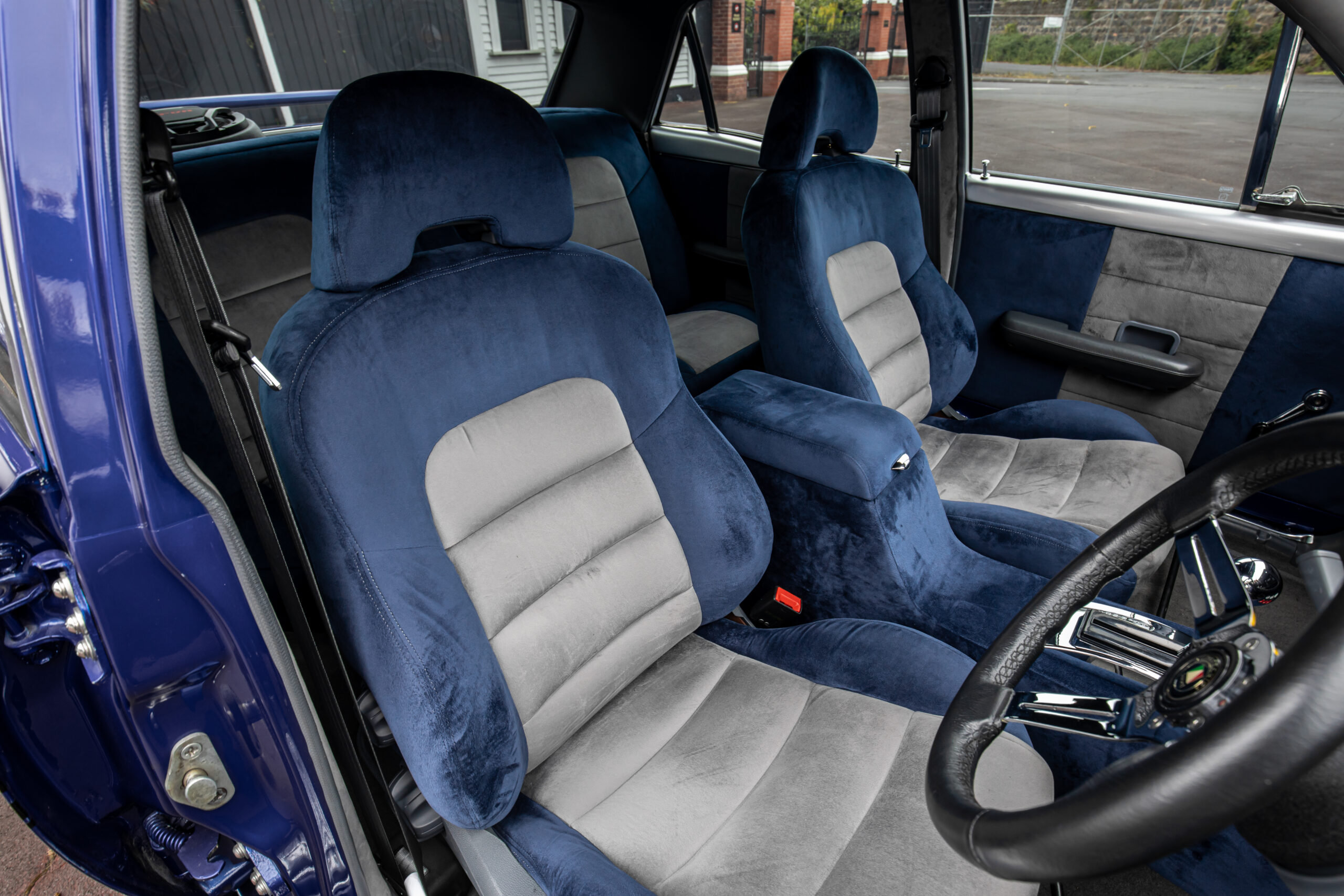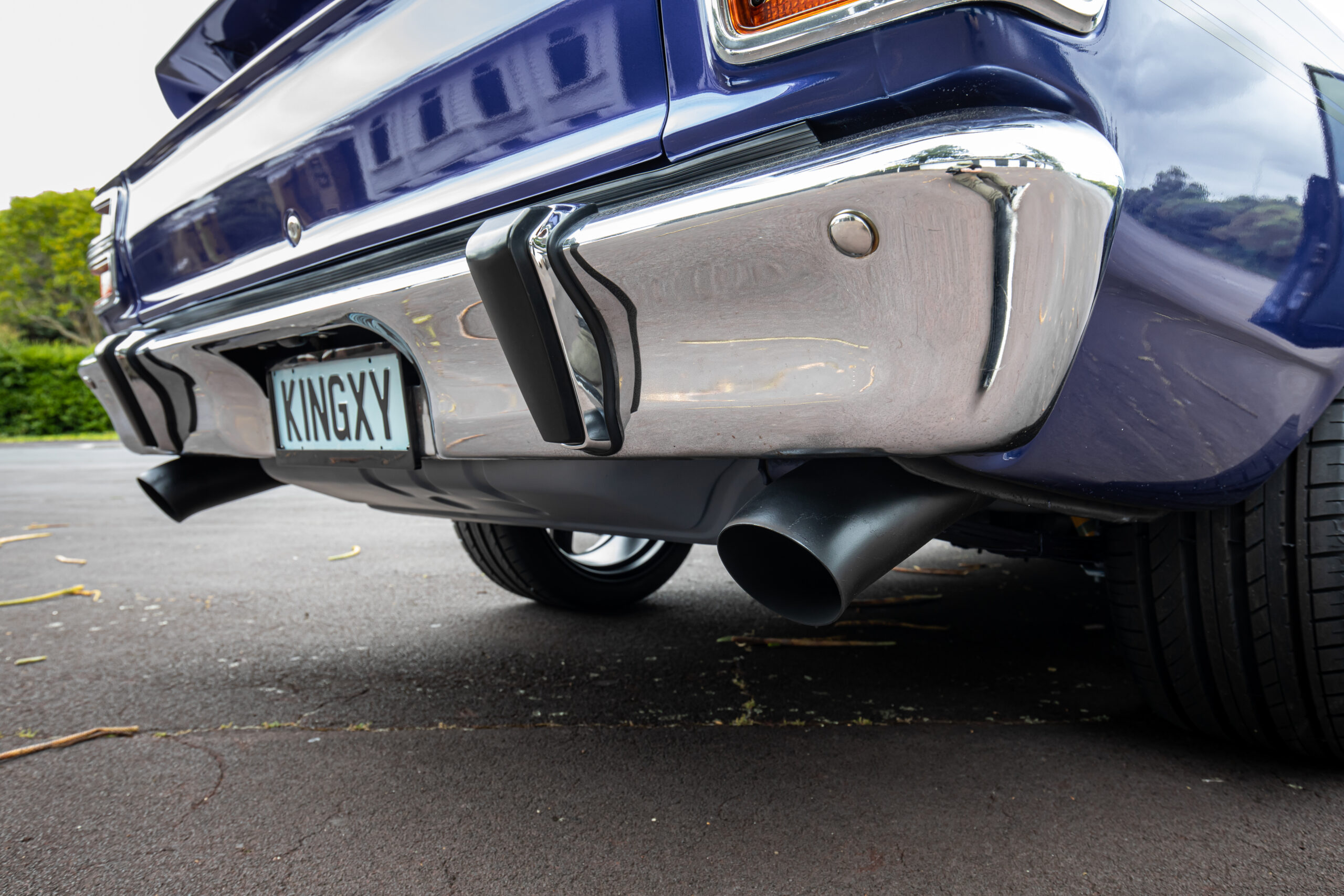Words: Shane Wishnowsky Photos: Glen McNamara
When Dan Irvine first laid eyes on this 1970 XY Falcon with a blown big block barely contained under the bonnet, it appeared cosmetically pretty much as it does today. Mechanically, though, it is a whole different story, and how it got to be the fire-breathing monster you see on these pages has been an interesting journey!
Dan was minding his own business one day when one of his mates got in contact with him asking, “Have you seen that XY for sale on Trade Me?” Dan is well versed when it comes to looking at cars, buying them, then selling them — his car total runs well into the hundreds! He replied that, yes, he had seen it, but, he says, “It just didn’t really catch my eye straight away.”
Yes, it was one of his favourite cars; yes, it had a supercharger sitting at roof height, and it had a monster 521-cube big block bolted to the bottom of said blower. However, there were too many unanswered questions that required a bit more research before he really started getting interested. Was it certified, and if it was, did the modifications match the cert plate? What parts had been used, and had it been butchered? What was the history of the car? Had it really only done 10,000km (6200 miles) since new?
It’s safe to say that when it comes to cars, Dan likes to really do his homework! Even with all the “perceived red flags” he thought might be present, he still hadn’t completely ruled out the car, and after a bit of digging, he found the answers to all of his unanswered questions, and more, making him start to think about it a bit more seriously
First up was the cert plate: 521ci big block Ford, supercharger, C6 transmission, nine-inch diff, Simmons wheels. Everything checked out, even the height of the blower was correct — a huge advantage, as getting a protuberance that is level with the roof certified today is nigh on impossible. Things were looking positive. Next, that mileage.
As it turned out, the almost unbelievably low mileage wasn’t a typo: this 1970 XY Falcon had barely been run in. Back in 1970, the then-green Falcon 500 rolled off the assembly line in Seaview, Wellington — yup, this thing is New Zealand new, also a huge bonus, as it made checking the history of the car so much easier! Owner number one had the car for seven years and did only a handful of kilometres in it, and then sold it to his uncle who put a grand total of 900km (600 miles) on it before parking it up for 15 years. He in turn passed it on to his brother, who put around 3000km (1860 miles) on it, using it off and on for the next eight years. It was at this point that the car ended up in New Plymouth (where Dan picked it up from), when a couple of brothers got hold of it and gave it the blown big block transformation over the next 10–12 years. So, when you add all that up, over its life, the Falcon has been stored on and off for close to 30 years. It has spent more time in a shed under a cover than it has on the road, so 10,000km sounds about right.
Clearly wanting to ratchet things up a notch or 12, the brothers sourced a 521-cube big block Ford engine and blower combo to “up the horsepower a bit”. A C6 and nine-inch were also bolted in to replace the original driveline. The body was in for a bit of a birthday too — everything attached to the shell was removed, then loaded into a container and shipped off to Aussie to be painted. Why anyone in the ’90s would ship a car overseas to be painted is anyone’s guess, but given the paint on it today is still that exact same paint, you can only say that it was well and truly worth it! At this stage, brother number one pretty much lost interest in the project. Brother number two had a block of land that was ‘surplus to requirements’, so did a swap and took over the task. The car was delivered to him in pieces and it was he who would finally put it back together and make it a complete car again. When he was happy with it, he listed it for sale, and that was when Dan entered the Falcon’s life and decided to completely rewrite the rulebook!
Once he had the Falcon back at his business Savage Garage, Dan and his workers took their time inspecting things a little more closely to see exactly what he had bought. It was mostly good news. Body-wise, the car was better than initially thought; a big plus was the fact that the shell hadn’t been bastardised in any way, shape, or form. Nothing had been chopped, altered, or molested — it was just as Henry Ford had intended it to be. Even the guards hadn’t been touched, which is a little bit of a rarity these days, and that appealed to Dan immensely. That aforementioned paint was a bit of a surprise too; aside from some swirls, the 30-year-old paint was flawless, a true testament to the painter. Sending it overseas had been worth it.
It didn’t stop Dan and his boys from grabbing some 3000-grit paper though, and the shell was rubbed back to remove minor blemishes, and, once the surface was like glass, it was ceramic coated. Savage Garage is primarily a detailing shop, so these guys know what they are doing when it comes to paint and detailing!
The engine was a completely different story. Dan says the block was exceptional, but he felt that the internals were completely mismatched and not to his liking. For example, the rods were great, but the crank was cast and had “shit pistons”. When Dan and his engine builder Michael Klaassen looked at the heads, both their jaws dropped. They couldn’t believe just how massive they were — someone had spent a lot of time on them with a die grinder, stretching them out to an enormous 388cc. Theoretically, there was no limit to the amount of air this engine could suck in if it had a decent manifold and blower set-up — which it didn’t. Dan says, “It could be fed by a 14-71 blower and still have more to give!” The combo was good for around 700–800hp — not a bad number for the street, but a figure that was well short of the number Dan was chasing.
To push that number into the four-figure region, he ordered a custom rotating assembly out of the States. A billet crank, some better rods, and some way better pistons found their way into the block, resulting in a displacement that now measures 555ci. The massive heads then got treated to some larger valves and stronger springs. Al from Al’s Blowers sourced an 8-71 blower and a more suitable manifold for the engine and match-ported everything to maximise air flow.
Sitting on top of the fresh engine is a pair of 950cfm double pumpers that have been re-jetted to 1050cfm each. A Don Garlits barn-door scoop tops off the engine nicely, hinting to anyone with eyes that maybe taking this thing on in a traffic-light drag race is a bad idea.
With the freshly rebuilt engine finished, it was bolted up to an engine dyno to see exactly what figures it was making. This engine was built for 30 pounds of boost, so the team had high expectations and they weren’t disappointed. Once the engine was run in on the dyno, it was time to start putting some numbers down. On 98 pump gas and only 13½ pounds of boost, the engine was revved to 6000rpm and recorded a figure of 1350hp. The team were ecstatic, but they had barely started.
The 98 was drained out and replaced with alcohol and the engine prepared for another power run. With the better fuel on board and a targeted boost of 26 pounds, the big block was revved to 7300rpm and produced an eye-watering 1807 horses with an earth-rotating 1910lb·ft of torque! For any normal person, that would have been more than enough, but curiosity got the better of them.
There just so happened to be a spare 10-71 blower sitting in the shop minding its own business. It would have been rude not bolt it up to see what difference the extra compressed air would make to the already mega-power engine. With the bigger blower on top, they really leaned on things and found another 100hp and four pounds of boost netting as close as makes no difference 2000hp!
Like most people would, Dan loved these numbers, but he’s not entirely stupid — 2000hp for a street-driven car is just ridiculous. So, after turning everything down as low as it could go, and with a safe tune on board, the hyperactive Falcon ‘only’ pushed out 1100hp at the treads on 11 pounds of boost. “Anywhere over half throttle, on any surface, in any gear, it just erupts into tyre smoke,” Dan says.
On the car’s recent trip to Beach Hop, the fuel economy recorded was a wallet-emptying 2.5 miles per litre; “real bad” in Dan’s book. Tyres were also expensive — at the start of the journey, a brand new set was put on the car; on their return home, an order was placed for another set of rears, but that’s a story for another day!
To say that Dan is happy with the Falcon is a bit of an understatement. Having such a good starting point made for a fairly straightforward (albeit expensive) rebuild. A keen eye will notice that the interior has been donated from an AU Falcon, which is not to Dan’s liking, and is in the process of being changed back to XY spec — much easier to live with. Also on the cards is a Wilwood billet brake upgrade — given the power figures, we think this is an excellent idea! His goal now, though, is to just take it out whenever he can and enjoy it. The car has been built as a cruiser, but with so much power already under his right foot, and a couple of “party pulleys” in his toolbox if he wants a little bit more, you may just find it dropping the odd power skid or making clouds on a burnout pad at an event near you!
_______________________________________________________________________________________________________
This article originally appeared in NZV8 issue 216





